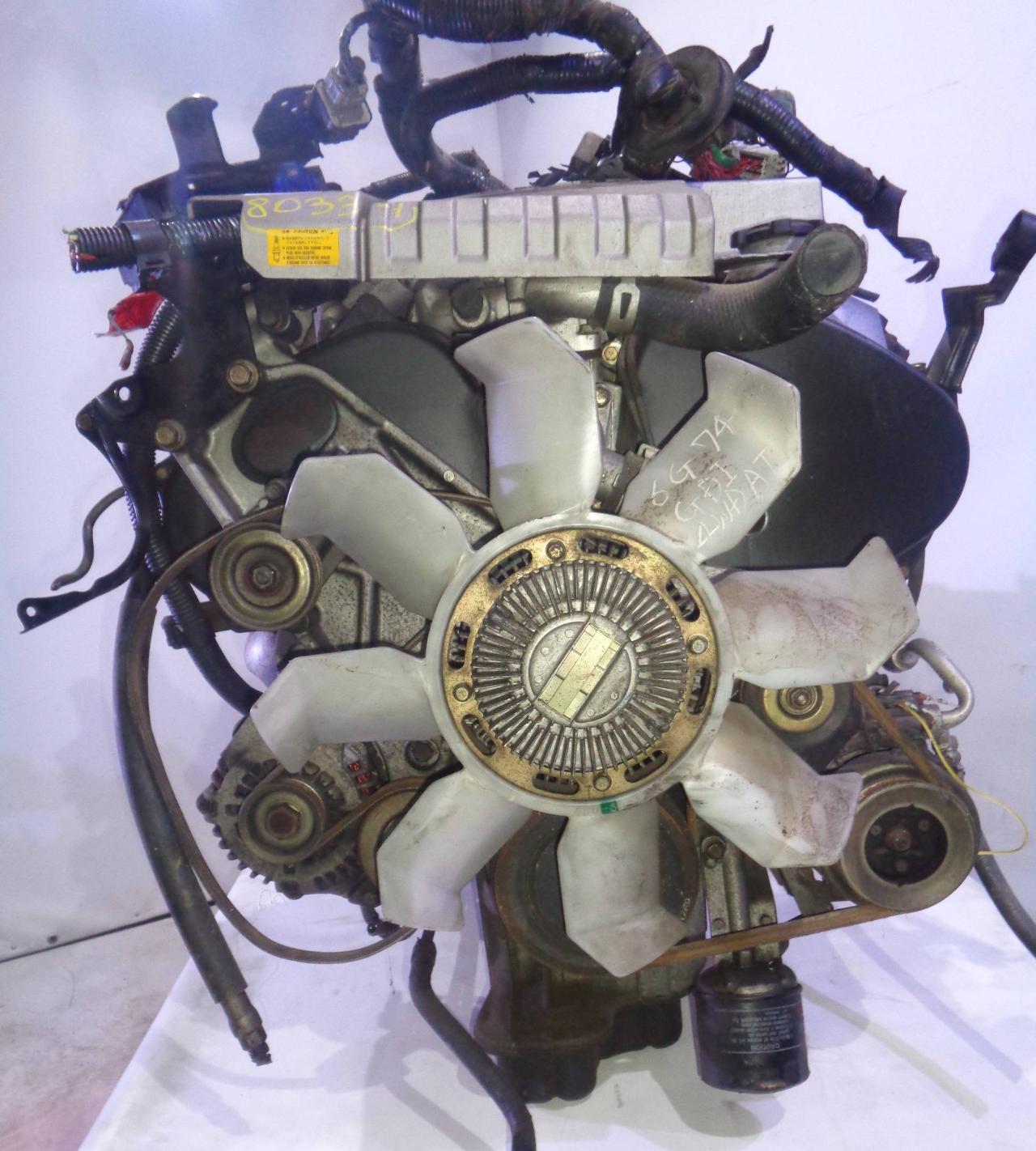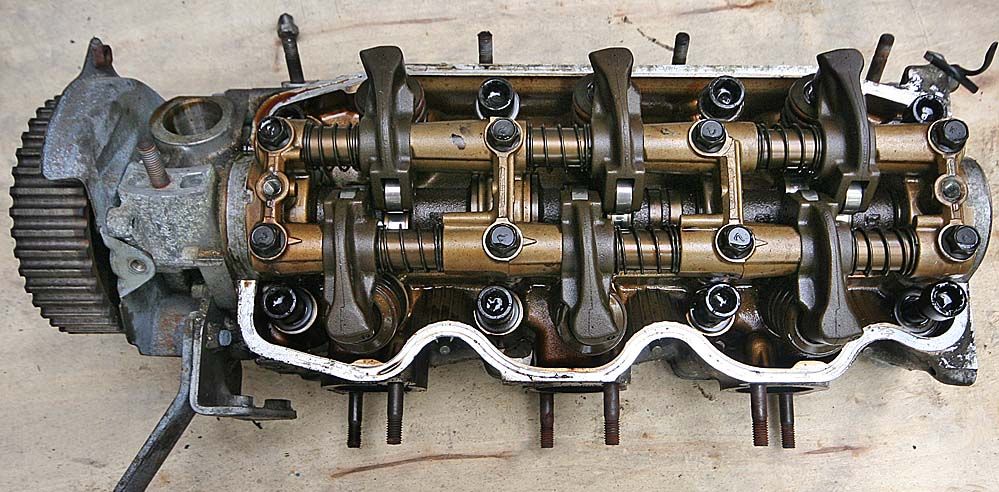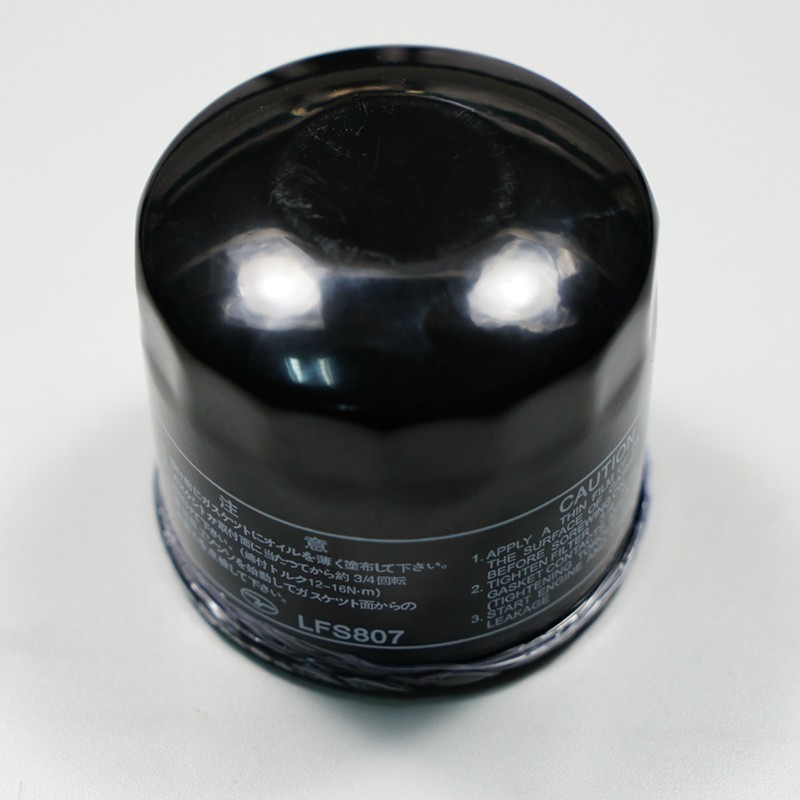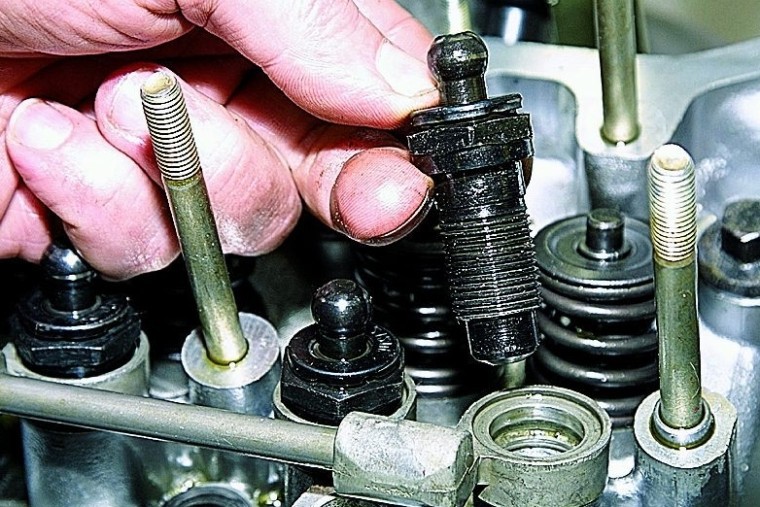
Mitsubishi 6G74 engine
Content
This power unit belongs to the category of gasoline engines. It is installed mostly on Pajero and its various modifications. 6G74 is one of the largest representatives of the Cyclone family, which includes its predecessors (6G72, 6G73), as well as the subsequent modification - 6G75.
Engine description

6G74 was put on the conveyor in 1992. Here he remained until 2003, until he was replaced by a more voluminous and powerful 6G75. The cylinder block of the unit was upgraded for a modified crankshaft with a piston stroke of 85.8 mm. At the same time, the diameter of the cylinders was increased by 1,5 mm. As for the cylinder head, they are used in different types, but all with hydraulic lifters.
Other features.
- A belt drive is installed on the 6G74 engine. The belt must be replaced every 90 thousand kilometers. At the same time, the pump and tension roller should be changed.
- 6G74 is a V-shaped "six" with an overhead camshaft.
- The cylinder block is made of cast iron, while the cylinder head and coolant pump are made of aluminum alloy.
- As for the crankshaft, it is made of steel, forged, and bearings serve as supports, in the amount of four pieces. To increase the rigidity of the engine, the designers decided to combine the cylinder block with the crankshaft.
 V-shaped "six"
V-shaped "six" - The pistons of this motor are cast from aluminum. They engage with the connecting rod with a finger.
- Piston rings are cast iron, various shapes.
- Scraper type oil scraper rings with spring expander.
- The chambers in which fuel combustion takes place are tent-type. The valves are made of refractory steel.
| Winemaking | Kyoto engine plant |
| Engine make | 6G7/Cyclone V6 |
| Years of issue | 1992-NV. |
| Cylinder block material | cast iron |
| Supply system | injector |
| A type | V-shaped |
| Number of cylinders | 6 |
| Valves per cylinder | 4 |
| The piston stroke, mm | 85.8 |
| Cylinder diameter, mm | 93 |
| Compression ratio | 9.5 (SOHC); 10 (DOHC); 10.4 (DOHC GDI) |
| Engine displacement, cc | 3497 |
| Engine power, hp / rpm | 186-222/4750-5200 (SOHC); 208-265/5500-6000 (DOHC); 202-245/5000-5500 (DOHC GDI) |
| Torque, Nm / rpm | 303-317/4500-4750 (SOHC); 300-348/3000 (DOHC); 318-343/4000 (DOHC GDI) |
| Fuel | AI 95-98 |
| Engine weight, kg | ~ 230 |
| Fuel consumption, l/100 km (for Pajero 3 GDI) | |
| - town | 17 |
| - track | 10, 5 |
| - funny. | 12, 8 |
| Oil consumption, gr. / 1000 km | до 1000; 0W-40; 5W-30; 5W-40; 5W-50; 10W-30; 10W-40; 10W-50; 10W-60; 15W-50 |
| Engine oil | 0W-40 |
| How much oil is in the engine, l | 4, 9 |
| Oil change is carried out, km | 7000-10000 |
| Engine operating temperature, deg. | 90-95 |
| Engine resource, thousand km | 400+ |
| Tuning, h.p. | 1000+ |
| Installed on cars | L200/Triton, Pajero/Montero, Pajero Sport/Challenger, Mitsubishi Debonair, Mitsubishi Diamante, Mitsubishi Magna/Verada |
Varieties of 6G74
The simplest version of the 6G74 engine operates with one camshaft, the compression ratio is 9.5, the engine power develops 180-222 hp. With. This SOHC 24 unit is installed on Mitsubishi Triton, Montero, Pajero and Pajero Sport.
Another version of the 6G74 uses a DOHC cylinder head - two camshafts. The compression ratio here is increased to 10, and the power is up to 230 hp. With. If the engine is also equipped with a Mayvek (phase change system), then it develops power up to 264 hp. With. Such motors are installed on the second generation Pajero, Diamant and Debonar. It was on the basis of this unit that the Mitsubishi Pajero Evo car was developed, with a power of 280 hp. With.
The third variation of the 6G74 is DOHC 24V with GDI direct fuel injection. The compression ratio is the largest - 10.4, and the power - 220-245 hp. With. Such a motor is installed on Pajero 3 and Challenger.

Nuances of operation
When operating the 6G74 engine, it is necessary to take into account the features of the lubrication system. It is necessary to regularly make a complete replacement of the lubricant every 7-10 thousand kilometers. More information about the types of oils can be found in the table. The crankcase holds up to 4,9 liters of lubricant.
Overhaul of the 6G74 engine depends not only on the long mileage of the car. Often this happens due to the illiterate, negligent attitude of the owner, who fills in low-quality fuel and oil, and does not carry out timely maintenance. A prerequisite for replacing the lubricant is updating the oil filter.

Superficial maintenance and an insufficient amount of operations during repairs also lead to a sharp reduction in engine life. Owners of cars with 6G74 are required to follow the rules prescribed in the manual - the manual of a particular car.
Common malfunctions
The most common malfunctions in the 6G74 engine are:
- increased oil consumption;
- knocking on the engine;
- unstable turnovers.
Increased oil consumption is associated with wear and deformation of oil scraper rings and caps. These malfunctions are important to eliminate and repair immediately. The oil level must be regularly monitored, topped up with fresh composition to the established mark.
Knocks are the first sign of problems with hydraulic lifters. Their failure requires replacement with new nodes. If extraneous noise is caused by the incorrect position of the connecting rods, their turning, nothing will save the owner from a major overhaul.

Floating speed 6G74 is usually associated with problems with the IAC - idle speed sensor. Simultaneous deformation of the throttle or intake manifold flange is possible. Spark plugs need to be checked.
All operations for the repair of the 6G74 engine must be carried out in certified service centers, where professional equipment and high-precision tools have been used. Replacement of internal elements should be carried out only with original samples or high quality analogues.
Replacing the hydraulic tensioner
Chirping on hot is a clear sign of a hydraulic tensioner malfunction. If there is no original part, you can buy Deko products for 1200 rubles. Installation is carried out in a couple of hours, at the same time the bearings in the pulley can be replaced. If a homemade press is available, then the procedures will be much easier.
To remove the hydraulic tensioner, you will need to use a wrench (14). The element is dismantled after the fastening is turned out, moving up / down. The bearing boot is removed with the same tool.
The hydraulic tensioner is a modified version of the conventional unit that tensions the timing belt. When replacing the belt, the tensioner also changes, although this is not indicated in the manual. The fact is that on used cars operated on our roads, the sensitive mechanism quickly becomes unusable.

Knock sensor
The following symptom indicates problems with this sensor - the check blinks, errors 325, 431 appear. During a long trip, error P0302 pops up. The regulator simply closes, and there are problems with mixture formation, revolutions, etc. In addition, the car begins to "stupid", consume a lot of fuel.
In general, any deviation from the norm in the operation of the engine is expressed by the explosive nature of the ignition of the fuel assemblies. In a normal situation, the flame spreads at a speed of 30 m / s, but when detonated, the speed can increase by 10 times. Due to such an impact, cylinders, pistons, and cylinder heads will easily fail. The sensor is designed as a controller based on the piezoelectric effect. It prevents detonation, carries out high-precision operation of all cylinders.

Intake manifold
On modifications of the 6G74 equipped with a direct injection system, the intake manifold and valves will inevitably become clogged with soot. The extent of contamination can only be accurately determined after disassembly.
The intake manifold is deliberately designed so that most of the soot remains in it without penetrating into the internal parts of the engine. However, with severe clogging of the assembly and valves, the air supply to the engine decreases, which increases fuel consumption. At the same time, power is reduced, dynamics are lost. All this requires immediate intervention.
Modernization
Tuning the 6G74 engine is not only about turbocharging. And buying separate turbo kits is not so effective, because there is a ready-made solution from the predecessor 6G72 TT.
Today, acquiring a 6G72 contract engine is not particularly difficult. Then you can easily carry out one of the types of tuning: chipping, bus tapping or turbocharging.
- Chipovka means updating the on-board computer software, turning off the rear lambda probes and increasing traction on the bottoms.
- The bus tap is quite easy to implement, increasing the explosive power of the air-fuel force and increasing the power output. The tuning principle of this type involves forced air injection using VVC or EVC. But improper boost-up can damage the engine, so it is important to be well versed in all the nuances of the procedure before its implementation.
- Turbocharging or replacing an existing turbine is a procedure that is carried out after the bead tap. The power limit is reached very quickly, as a large compressor is able to pump a lot of air.
Varieties of tuning
| Varieties of tuning | Note |
|---|---|
| Bust Ap | Controlled by VVC (mechanical type discharge pressure controller) or EVC (electrical type discharge pressure controller). |
| Turbine replacement | Installing a larger turbine will give a noticeable increase in power. |
| Intercooler replacement | Replacing the standard intercooler with a larger one with improved heat transfer characteristics will give greater efficiency. |
| Refinement of the ignition system | In the ignition system, a strong spark and reliable ignition are a significant factor. The usual, most simple tuning involves replacing the spark plugs. |
| Compression adjustment | As the air-fuel mixture in the engine is compressed, the force of the explosion in the cylinders increases, and, accordingly, the power produced by the engine. |
Reviews
| Alex 13 | As for the motor - if it's alive, then it's normal. If tired - very expensive to repair. Many people think it's easier to change. Enviable dynamics / gluttony / cost of operation - this is the credo of this pepelats. |
| Onyx | The cost of operation, in my opinion, is not much different from a 3-liter and from a diesel engine .... so on cigarette matches .. It all depends on where to go and how much to roll a year. |
| Newcomer | 3 - 3,5 - unprincipled. You can save on benzus at 3 liter, but how effective will it be, and how many times will it differ from 3,5 ??? I would look for a car with a good body, a clean history, I would look at its condition and equipment. And maintenance of a jeep cannot be cheap by definition. If it hit, then it hit, if not, then no. The volume of the engine mine is uncritical. And everything is being repaired - that diesel, that 3 liters, that 3,5. |
| Alex Pauley | The 6G74 motor is still at the level ... 6G72 and 6G74 the difference is simply huge. In repair it is really expensive maintenance. 200 thousand mileage is serious, it is necessary to call in for diagnostics and evaluate the condition of this car .... But just do I like 74. A friend has a 4700cc cruise and edits like my 3500cc ... Yes, and at that time the short 3500cc padzherik was the fastest and most dynamic JEEP ... For example, mine accelerates at a maximum speed of 200 km ... In the city it is very convenient on it fast and maneuverable. At normal rates, consumption in the city is 15,5 summer 18 winter. |
| Garrison | The 6G74 is an excellent rally engine, it is still very much appreciated by athletes, but it runs no more than 300-350 thousand km. |
| Buran | He himself moved from 6g72 to 6g74, so listen here. Engines are as different as heaven and earth. If there are no hands and only money, then 6g74 will reduce them for you. Such clients are loved. The fact is that the 74th is much more reliable than the 72nd, but it has a couple of children's sores that are corrected on the go, but the service knows about them and fights like they are repairing a Boeing. No. 72 has no children's ailments, if it hits there, then it hits specifically. The engine is more gentle and more likely for a pickup truck than for a jeep. Consumption - for a tuned 74, the consumption is LESS by 1-2 liters than for a tuned 72. Since the slipper on the floor does not need to be constantly pressed. The dynamics are amazing. And most importantly, the maintainability of 74 (if you do it yourself, and do not give it to the vultures to be torn to pieces) is incommensurably higher than that of 72. Yes, in some places you need to get confused in order to crawl, but then it works for 10 years without problems. In short, the Trophians know what kind of engine it is and it’s not in vain that they love it. |
| Kolya | There is no better engine than the 6G74 in the world, this is the civilian prototype of the rally champion for many years…. everything is checked for real and proven to the world more than once ... |
| Expert | It is important to pay attention to the following points: smokes or does not smoke during a cold start; gidriki do not knock; pay attention to starting the engine at a cold cold; if everything is normal, then you can’t think of anything better ... and you won’t find an alternative |


